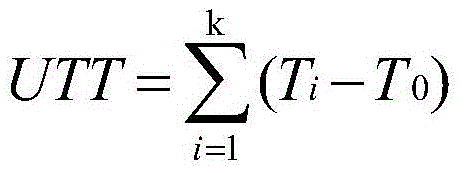SNP (single-nucleotide polymorphism) marker related to Marsupenaeus japonicus heat resistance and detection method thereof
A detection method and technology of heat resistance, applied in botany equipment and methods, biochemical equipment and methods, microbial determination/testing, etc., can solve few problems such as heat resistance-related SNP screening and detection
- Summary
- Abstract
- Description
- Claims
- Application Information
AI Technical Summary
Problems solved by technology
Method used
Image
Examples
Embodiment 1
[0033] Embodiment 1: cDNA and DNA sequence cloning of Penaeus japonicus HSP60 gene, comprising the following steps:
[0034] 1) Extraction of muscle DNA of Penaeus japonicus;
[0035] 2) Amplification of the intron of the HSP60 gene;
[0036] 3) Obtain the full-length sequence of the MjHSP60 target gene.
[0037] In step 1), the specific method for extracting the muscle DNA of Penaeus japonicus can be: extracting with phenol / chloroform, and then detecting the DNA by agarose TBE gel electrophoresis.
[0038] In step 2), the specific method of the amplification of the intron of the HSP60 gene can be:
[0039] a) Primer design
[0040] According to the MjHSP60mRNA of Penaeus japonicus (GenBank accession number: JQ972715.1) and the complete sequence of Scylla paramamosain HSP60 gene (GenBank accession number: JX262230.1), primers were designed at both ends of the adjacent exons, and finally using crossover Primers verified for unexpanded introns. The primer sequences used for...
Embodiment 2
[0053] Embodiment 2: Screening of SNP markers related to heat tolerance in the HSP60 gene of Penaeus japonicus, including the following steps:
[0054] 1) Experimental prawns
[0055] Genomic DNA extraction (same as above)
[0056] 2) SNP detection of MjHSP60 gene in different populations of Penaeus japonicus
[0057] a) Screening of SNPs by direct sequencing
[0058] A total of 7 pairs of primers were designed according to the obtained full-length sequence of the coding region of the MjHSP60 gene (the sequences of the primers used for SNP detection of the MjHSP60 gene are shown in Table 2), covering the entire length of the gene as much as possible. The experimental prawns included 4 geographical groups: Penghu (PH), Zhaoan (ZA), Beihai (BH), and Sanya (SY), with 30 each. It was found by observing whether the twill stripes on the side of the carapace were fully extended. Penghu belonged to morphological variation type I population (heat-sensitive population), while Beihai ...
Embodiment 3
[0069] Embodiment 3: A detection method for SNP markers related to thermal tolerance, comprising the following steps:
[0070] 1) Preparation of experimental materials;
[0071] 2) Genotyping using PCR-RFLP technology;
[0072] 3) Analysis of individual heat tolerance of different genotypes of Penaeus japonicus.
[0073] In step 1), the specific steps for preparing the experimental materials are:
[0074] a) Heat resistance experiment of Penaeus japonicus
PUM
 Login to View More
Login to View More Abstract
Description
Claims
Application Information
 Login to View More
Login to View More - R&D
- Intellectual Property
- Life Sciences
- Materials
- Tech Scout
- Unparalleled Data Quality
- Higher Quality Content
- 60% Fewer Hallucinations
Browse by: Latest US Patents, China's latest patents, Technical Efficacy Thesaurus, Application Domain, Technology Topic, Popular Technical Reports.
© 2025 PatSnap. All rights reserved.Legal|Privacy policy|Modern Slavery Act Transparency Statement|Sitemap|About US| Contact US: help@patsnap.com



